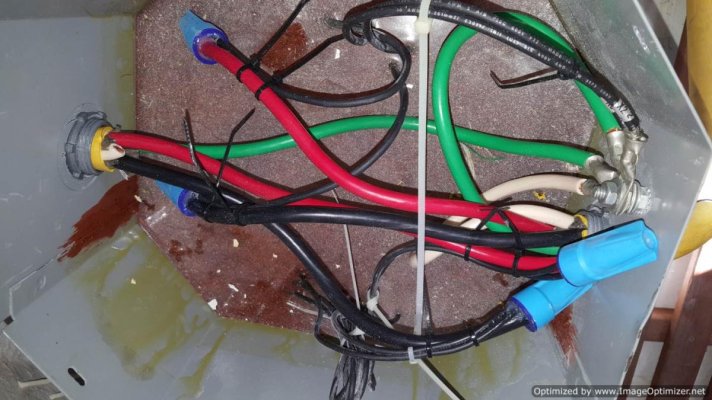markpj23
Senior Member
- Joined
- Mar 25, 2021
- Messages
- 199
- Vessel Name
- Black Horse
- Vessel Make
- Med Yachts 62
While poking around the boat today I found part of the electrical connection access cover on the isolation transformer was not installed. No biggie, I'll just put it back on... hmm that looks interesting.....
The shore power input side to the transformer has its negative and external ground leads tied to the same terminal on the frame. The shipboard side wiring is just L1, L2 and external ground. The neutral lead is not connected. The external ground is bridged across the transformer and is common to both input & output sides, from what I can see in the picture. (Input lead is on the right side of the picture)
I seem to recall that this setup can cause issues in marinas with the new GFCI sensing pedestals? The system obviously works but is it the way it should be?
The shore power input side to the transformer has its negative and external ground leads tied to the same terminal on the frame. The shipboard side wiring is just L1, L2 and external ground. The neutral lead is not connected. The external ground is bridged across the transformer and is common to both input & output sides, from what I can see in the picture. (Input lead is on the right side of the picture)
I seem to recall that this setup can cause issues in marinas with the new GFCI sensing pedestals? The system obviously works but is it the way it should be?


 You might try taking a few blind pictures just to see if there is anything worth checking more closely.
You might try taking a few blind pictures just to see if there is anything worth checking more closely.